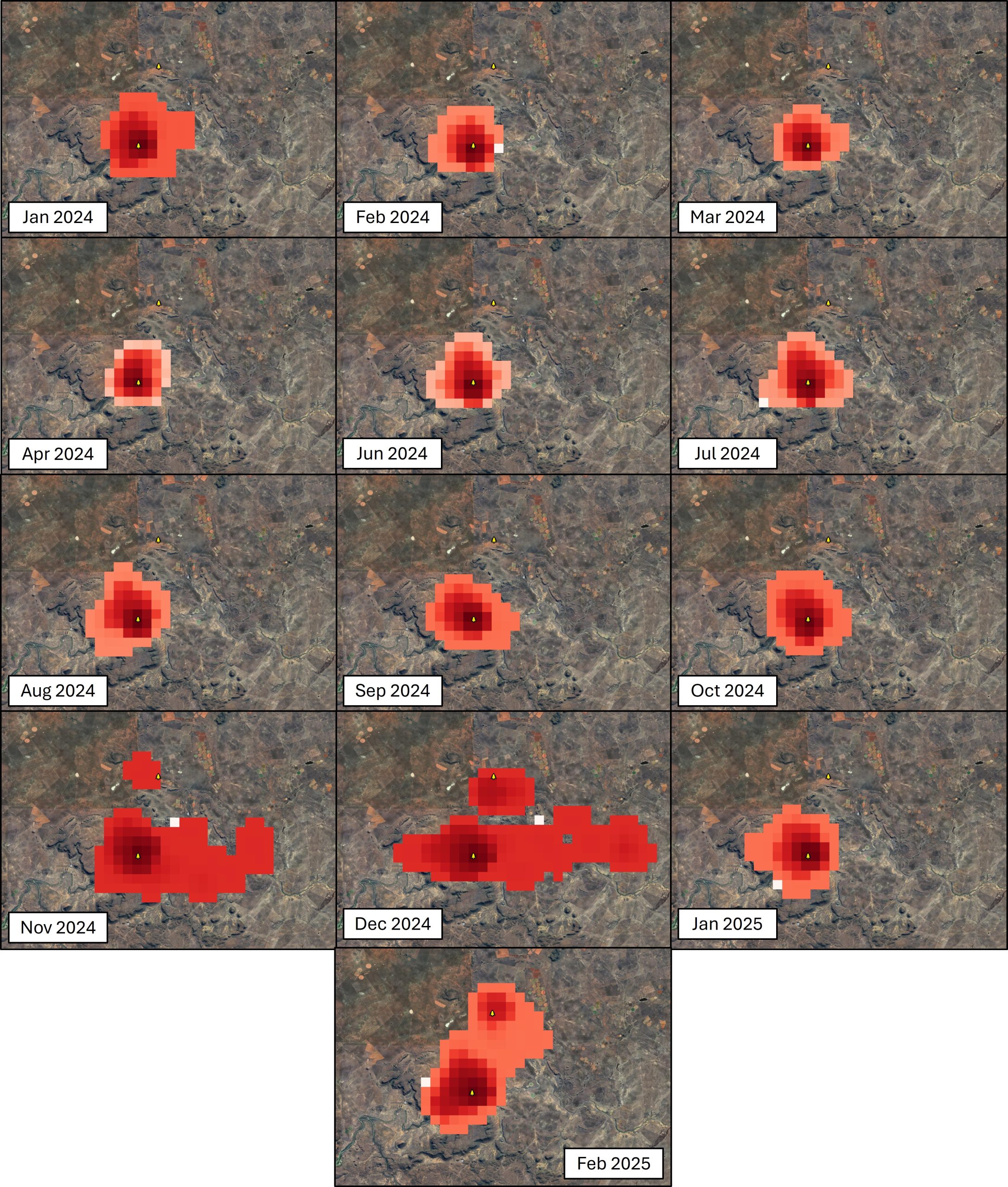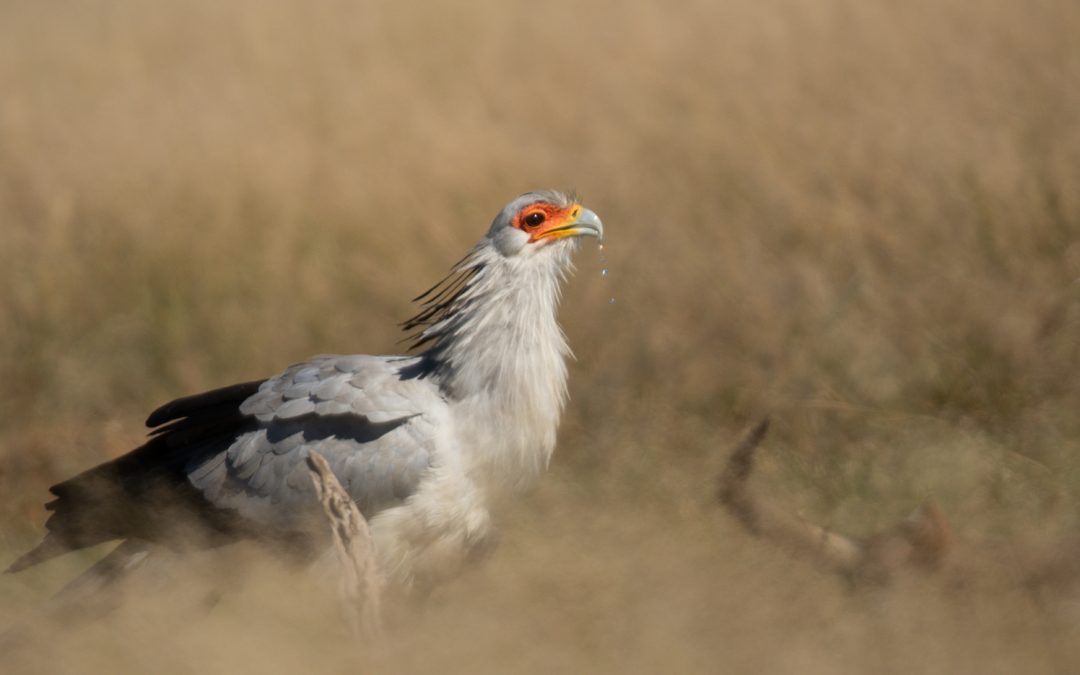By Cassie Carstens, Secretarybird Conservation Manager, BirdLife South Africa.
As with most large bird species across the globe, the threats that Secretarybirds face are varied and widespread. Loss, fragmentation, and habitat degradation have the most significant impact, with the open savannas and grasslands they prefer having seen dramatic changes over the past few decades, with the most prominent expansion of agricultural and residential areas. Land use changes have caused smaller pieces of veld to be suitable, and even the protected areas where these birds are supposed to flourish appear to be too overgrown with tall grass, encroaching trees and shrubs. Fatal collisions with powerlines, fences, and wind turbines also negatively impact them, with the potential addition of secondary poisoning also playing a role.
According to the International Union for the Conservation of Nature (IUCN), over the past 15 years, this iconic African species has gone from being considered Least Concern to Endangered. The IUCN’s Red Data grading system reflects the conservation status of species worldwide, and the plight of the continent’s birds of prey is especially dire. In South Africa, Secretarybirds are still hanging on, with an estimated population of 5,500-11,000 birds remaining in the wild. Across the rest of their Sub-Saharan distribution, however, they are disappearing at a rapid pace. That decline is slower here, but immediate action is required to ensure their survival.
Secretarybirds occur over most of South Africa, with open grassland and savanna being the most sought-after habitats. Despite their amazing snake-catching and eating feats, insects and rodents make up most of their diet. Covering 15-30 km per day in search of food, these birds are truly the wanderers of the African plains. Their breeding season usually starts in early spring, but they can breed anytime if sufficient food resources are available. Nests consist of a platform of sticks and grass on top of low shrubs and bushes between 2-5 m high, and the more thorns these plants have, the better. Females can lay between two and five eggs incubated by both pair members for just over 40 days, with survival ensured for all nestlings if there is enough food.
BirdLife South Africa launched its Secretarybird Project in 2011, intending to improve our knowledge of how the rapidly changing landscape is utilised. Close engagement with the agricultural community was also critical, with the birds most frequently encountered in open grazing camps. The first big study consisted of deploying GPS tracking devices on young birds, with a total of 10 units deployed between 2012 and 2014. The insights gained were fascinating. Young fledglings spend a few months around the natal nest, progressively exploring a wider area each week.

Breeding movements
Once independent, the youngsters disperse long distances, with one individual travelling from Gauteng to the Makgadikgadi Pans in Botswana and back. Another moved from the nest near Warden in the Free State all the way to Amanzimtoti in KwaZulu-Natal!
With the data gained from this first phase of the tracking study, the first conservation actions could be implemented, and this entailed the recommendation to buffer an area of 1,6 km in radius around nests during the development of wind energy projects. However, the lack of adult movement data was a key shortcoming. A second phase of tracker deployments was conducted from 2020 to 2021, with 12 more units used. Four of those birds and the tracking units they diligently carried managed to survive, and for the first time, adult movement during breeding attempts was recorded!
The results show that the 1,6 km distance is inadequate, with adults moving an average of 3,5 km from the nest. This newly gained knowledge will improve the mitigation measures, with the hope that their survival rate will improve.
Future work entails the deployment of several more trackers in a third phase of the study. Additionally, the sharing of bird-friendly grazing and burning regimes with the farming community will also be prioritised. A wildlife-friendly fence design is also in the works, with which we hope birds and mammals will be protected without compromising the needs of livestock farmers.
Should you know of any Secretarybird pairs in your area, if you know the location of a nest or two, or even if you just want to learn more about these amazing birds, please get in touch with BirdLife South Africa’s Secretarybird Conservation Manager at cassie.carstens@birdlife.org.za.

